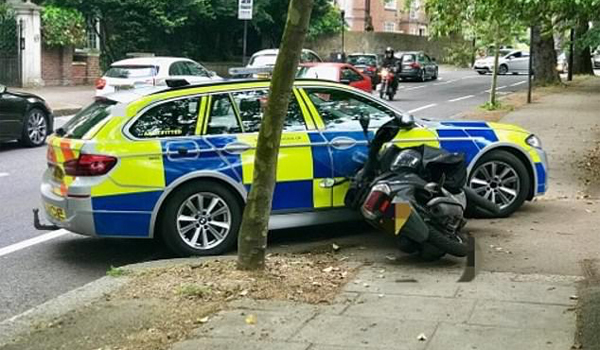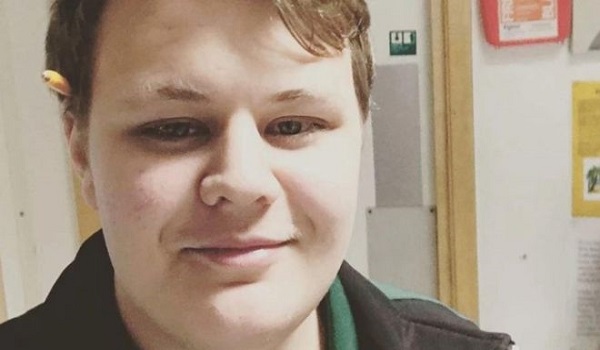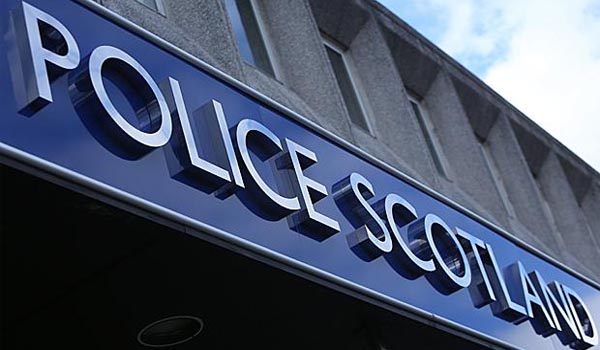Police drivers given new guidance for tactical contact in moped pursuits
Police drivers have been given renewed clarity over the use of tactical contact during moped pursuits after new guidance was issued by the Independent Office for Police Conduct (IOPC).
The controversial technique involves drivers deliberately making contact with mopeds ridden by suspected criminals, knocking them off the vehicles. A number of riders, many of whom were not wearing helmets during the pursuit, have been left injured by the tactic and several officers have faced misconduct hearings as a result.
The updated guidance acknowledges tactical contact as a legitimate use of force for appropriately trained police drivers when authorised, but seeks to better support police officers in carrying out their assessment of the situation and risks posed.
Although moped crime has been most prevalent in the London area, the guidance changes have been sent to all chief constables in England and Wales by the National Police Chiefs’ Council’s (NPCC) Lead for Police Pursuits.
The guidance covers issues such as the use of alternative tactics, weighing up the severity of the suspected offence and the likelihood of causing injury to the riders, others and themselves. It also reinforces that use of the tactic must be authorised.
IOPC interim Deputy Director General Jonathan Green said the updated guidance was designed to help better protect both police officers and the public. “It’s critical that police officers using their powers to detain suspected offenders have clear, unambiguous guidance to support them in carrying out their difficult roles and that the public have confidence that any dangerous situations created by police pursuits are brought to an end as swiftly as possible,” he said.
“A number of our recent investigations have identified learning highlighting the need to clarify when it is appropriate to use tactical stop powers, and this learning has helped inform the new guidance.
“In discussions with the NPCC and Metropolitan Police Service (MPS), we have been able to develop this guidance, filling gaps and assisting officers when judging the right circumstances for using deliberate contact. The new guidance helps officers weigh up the risks in fast-moving situations so that they can carry out stops effectively, and at the same time offers reassurance to the public that the tactic is used as safely and proportionately as possible.”
Mr Green said independent scrutiny by the IOPC, and the learning that came from it, was vital for building confidence in the way this area of policing is carried out. “We have engaged collaboratively with the police and the public over the last year, in relation to the matters which concerned them most. Roads policing, and particularly the recent rise in deaths from road traffic incidents, was identified as a priority area of focus for us and we have set up a subject matter network internally to optimise our expertise in this area and to maximise our learning from these cases,” he said.
“Taking a look at themes like roads policing means we can better identify trends, issues and gaps, which can inform learning, strengthen policing practice, prevent mistakes reoccurring and overall, improve police and public safety.”
NPCC pursuits lead, Assistant Chief Constable Steve Barry said: “Working with the IOPC, stakeholders and practitioners, a NPCC working group has updated guidance to ensure officers are better supported in assessing the circumstances and proportionality of a tactical response to a pursuit.
“Offenders on mopeds and motorcycles who attempt to evade the police are making a choice that puts themselves and others at risk. The public expect us to intervene to keep them safe. Highly trained police drivers are tasked with weighing up the risks and deciding upon the most appropriate tactics in fast-paced circumstances.”
Chief Superintendent Colin Wingrove, from the MPS Roads and Transport Policing Command, said: “The MPS is committed to tackling moped enabled and violent crime in London and the public rightly expect us to make London safer. We welcomed the opportunity to influence the development of new national guidance for our officers and staff who undertake pursuits by working with NPCC, IOPC and colleagues.
“The updated national approved policing practice for pursuits aims to provide greater support for our highly trained police drivers in making dynamic and spontaneous decisions to bring pursuits to a safe conclusion. The guidance also provides greater transparency and confidence for the public in the tactics police use when offenders seek to commit crime and avoid capture.
“Our aim is to reduce the risks posed to themselves and the public, and our officers who are placed in a difficult situation in bringing those offenders to justice and making London safer.”
Five IOPC investigations involving tactical contact with two-wheeled vehicles have informed the guidance.
One resulted in management action against an MPS officer after a misconduct hearing heard he had been given authority to use a police vehicle to halt a 17-year-old rider on a stolen moped in Erith, south London, in November 2017.
The teenager, who was not wearing a helmet, was knocked unconscious and sustained a fractured skull, fractured foot and eye socket in the incident in November 2017. The misconduct panel did not find misconduct proven in relation to the use of tactical contact but determined that the officer should receive formal management action around how his justification for using it had been presented.
In another incident, the MPS agreed an officer, who was not trained in Tactical Pursuit and Containment (TPAC), should face a misconduct meeting over an incident in Ealing in March 2018 when he used a police car to stop a man on a motorcycle who was travelling at speeds of up to 80 mph.
The impact resulted in a broken leg for the motorcyclist when he collided with a lamppost.
Misconduct was not proven at the meeting and the panel agreed ‘No Further Action’ in relation to the use of tactical contact when not trained. The officer is to undergo reflective practice/learning in relation to the writing of notes to justify use of force. The motorcycle had earlier been travelling at speeds of up to 80 mph.
Another IOPC investigation found police officers acted appropriately during a pursuit in Ruislip in February 2019 which ended when two teenagers were knocked from a moped after authorised tactical contact.
The driver was uninjured, but the 15-year-old passenger sustained serious facial injuries. Neither was wearing a helmet. The officer driving the police car was TPAC trained and other tactics to resolve the pursuit had proved unsuccessful.
A TPAC trained MPS officer will face a misconduct hearing later this year over his use of tactical contact with a moped being riden by a 14-year-old boy in Uxbridge in February 2018. The moped had mounted the pavement on a residential street and the rider sustained a broken leg.
Finally, the IOPC found tactical contact was used effectively to apprehend two men on a moped, who had just robbed a woman pedestrian of her mobile phone after mounting the pavement in Hackney Road, east London on June 21 this year.
The IOPC reported: “There was no indication that the TPAC-trained police driver breached MPS policies. We found that the police driver proportionately and competently executed his duties, deploying an approved tactical technique to apprehend the suspects and to protect the public. The men, aged 18 and 20, have since received prison sentences for the offence.”







